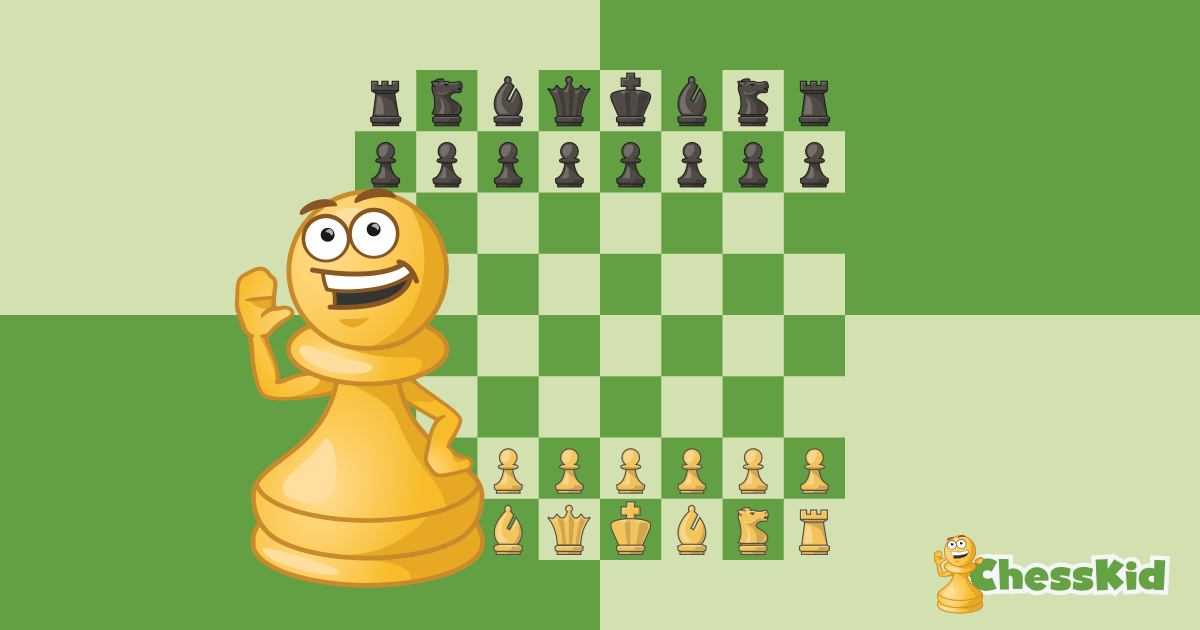Basic Checkmates by Sofia
In this blog I will describe four of the most basic checkmates you can think of. These might be a quick refresher if you have forgotten one or two of them, or if you are unfamiliar with one you will know what you should learn next.
- Rook Roller
- King and Queen Mate
- Back Rank Checkmate
- Smothered Mate
Rook Roller/ Two Rook Checkmate
 Rook Roller! | Checkmate with Rooks | ChessKidSo you know how to mate with a queen, but what if you have a couple of rooks instead? Don’t worry — it’s even easier! FM Mike Klein shows you an ironclad tec…
Rook Roller! | Checkmate with Rooks | ChessKidSo you know how to mate with a queen, but what if you have a couple of rooks instead? Don’t worry — it’s even easier! FM Mike Klein shows you an ironclad tec…
The rook roller requires only two rooks to give checkmate, although you need a white and black king on the board for the position to be legal.
Here, the rooks rotate, one checking the king whilst the other prevents him from escaping, slowly forcing the king to one side of the board where they can checkmate him. This is also kind of like they’re rolling up the board, hence the name.
If your opponent wants to prolong the game, while their king is being driven back they move it diagonally in the direction of your rook, and when they get there, unless you’d like to lose a rook you might want to spare a move to relocate your rook to the other side of the board.
Continue with the rooks rolling up the board, watching out for that pesky king and you’ll have given checkmate in no time.
Practice the rook roller
 Chess Workouts: Practice Two Rook Mate – ChessKid.comPractice how to checkmate with two rooks without the help of a king. This checkmate pattern is called a ladder mate. More chess training on ChessKid.
Chess Workouts: Practice Two Rook Mate – ChessKid.comPractice how to checkmate with two rooks without the help of a king. This checkmate pattern is called a ladder mate. More chess training on ChessKid.
King and Queen Mate
This mate also involves great teamwork with the King and Queen, with the queen making a box with the king defending her. The queen shrinks the box as often as possible, with the king coming to help in between. After all, no matter how powerful the queen is, she still needs a helper- and even though the king may not be viewed as particularly powerful, he would do the job of defending the queen excellently.
Towards the end of this mating pattern, the risk of stalemate is very high. So remember to think before you move in case you land yourself half a point instead of a whole one!
Practice king and queen checkmate with ChessKid workouts,
 Chess Workouts: Queen and King Checkmate – ChessKid.comPractice how to checkmate with only a queen and a king. This checkmate pattern is also called the kiss of death. More chess training on ChessKid.
Chess Workouts: Queen and King Checkmate – ChessKid.comPractice how to checkmate with only a queen and a king. This checkmate pattern is also called the kiss of death. More chess training on ChessKid.
the two rook checkmate on Chess.com
 Chess Workouts: Practice Two Rook Mate – ChessKid.comPractice how to checkmate with two rooks without the help of a king. This checkmate pattern is called a ladder mate. More chess training on ChessKid.
Chess Workouts: Practice Two Rook Mate – ChessKid.comPractice how to checkmate with two rooks without the help of a king. This checkmate pattern is called a ladder mate. More chess training on ChessKid.
Back Rank Checkmate
This checkmate is usually brought upon to your opponent by themselves; with you only needing to give the final checkmating move. This is usually because they haven’t moved a pawn away from their king when they castle and don’t have a rook or queen on the back rank. However, if they have moved a pawn away from the king by a square, all you need to do is watch over that space with a bishop or a queen.
Move to the back rank with a rook or a queen, and you’ve completed the back rank checkmate! Simple, isn’t it?
Smothered Mate
This checkmate literally smothers the opposition’s king, since it cannot move anywhere at the end of the game (with its own pieces blocking it in).
The mating net begins by you positioning your knight by your opponent’s king where it could give it checkmate when you’re ready.
Next, you lure your opponent’s piece next to their king with a sacrifice, blocking it in.
And then you pounce, giving checkmate to the king with your knight. And voilà, you have completed the smothered checkmate!
 Smothered Mate – Chess TermsLearn what a smothered checkmate is in chess! Learn all you need to know about this checkmating pattern, which is one of the trickiest ways to win (or lose) in chess!
Smothered Mate – Chess TermsLearn what a smothered checkmate is in chess! Learn all you need to know about this checkmating pattern, which is one of the trickiest ways to win (or lose) in chess!
Thank you for reading this article. If you’re a beginner looking to improve more, try Dagne’s Udemy Chess Course for Beginners (Understand Chess Better). What’s one of the checkmates that you struggle the most with? Let us know in the comments below.
In this blog I will describe four of the most basic checkmates you can think of. These might be a quick refresher if you have forgotten one or two of them, or if you are unfamiliar with one you will know what you should learn next.
- Rook Roller
- King and Queen Mate
- Back Rank Checkmate
- Smothered Mate
Rook Roller/ Two Rook Checkmate

The rook roller requires only two rooks to give checkmate, although you need a white and black king on the board for the position to be legal.
Here, the rooks rotate, one checking the king whilst the other prevents him from escaping, slowly forcing the king to one side of the board where they can checkmate him. This is also kind of like they’re rolling up the board, hence the name.
If your opponent wants to prolong the game, while their king is being driven back they move it diagonally in the direction of your rook, and when they get there, unless you’d like to lose a rook you might want to spare a move to relocate your rook to the other side of the board.
Continue with the rooks rolling up the board, watching out for that pesky king and you’ll have given checkmate in no time.
Practice the rook roller

King and Queen Mate
This mate also involves great teamwork with the King and Queen, with the queen making a box with the king defending her. The queen shrinks the box as often as possible, with the king coming to help in between. After all, no matter how powerful the queen is, she still needs a helper- and even though the king may not be viewed as particularly powerful, he would do the job of defending the queen excellently.
Towards the end of this mating pattern, the risk of stalemate is very high. So remember to think before you move in case you land yourself half a point instead of a whole one!
Practice king and queen checkmate with ChessKid workouts,

the two rook checkmate on Chess.com

Back Rank Checkmate
This checkmate is usually brought upon to your opponent by themselves; with you only needing to give the final checkmating move. This is usually because they haven’t moved a pawn away from their king when they castle and don’t have a rook or queen on the back rank. However, if they have moved a pawn away from the king by a square, all you need to do is watch over that space with a bishop or a queen.
Move to the back rank with a rook or a queen, and you’ve completed the back rank checkmate! Simple, isn’t it?
Smothered Mate
This checkmate literally smothers the opposition’s king, since it cannot move anywhere at the end of the game (with its own pieces blocking it in).
The mating net begins by you positioning your knight by your opponent’s king where it could give it checkmate when you’re ready.
Next, you lure your opponent’s piece next to their king with a sacrifice, blocking it in.
And then you pounce, giving checkmate to the king with your knight. And voilà, you have completed the smothered checkmate!

Thank you for reading this article. If you’re a beginner looking to improve more, try Dagne’s Udemy Chess Course for Beginners (Understand Chess Better). What’s one of the checkmates that you struggle the most with? Let us know in the comments below.
